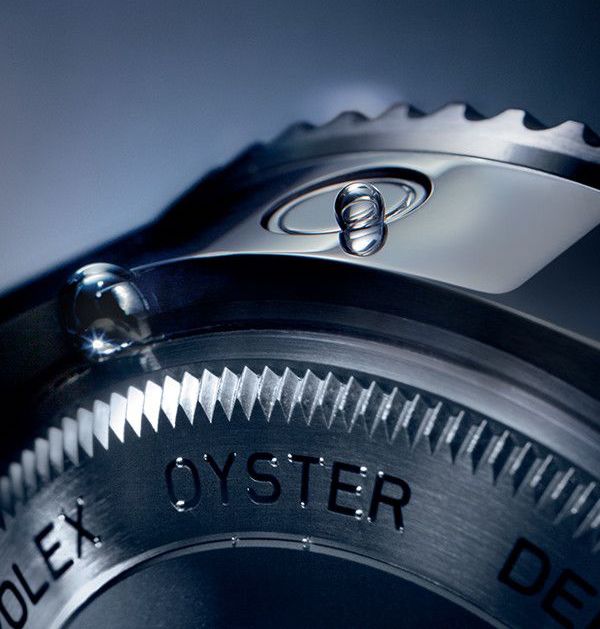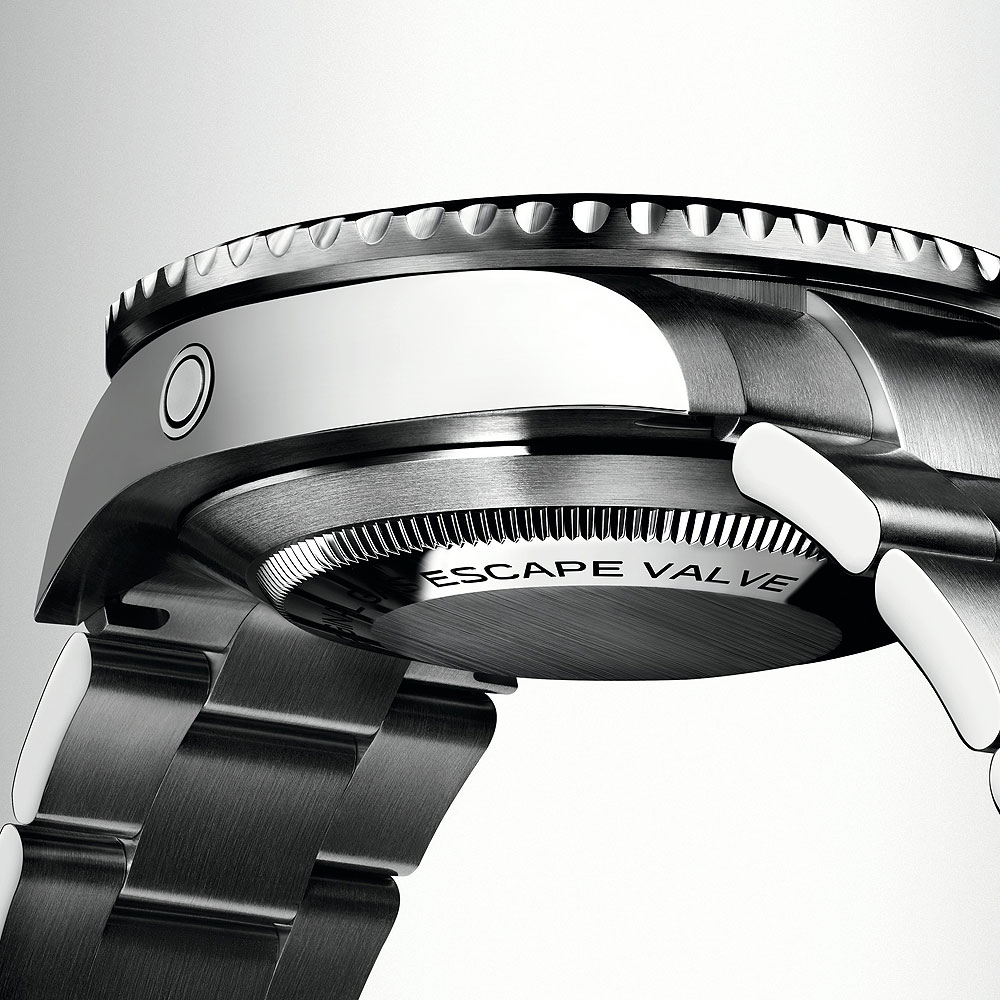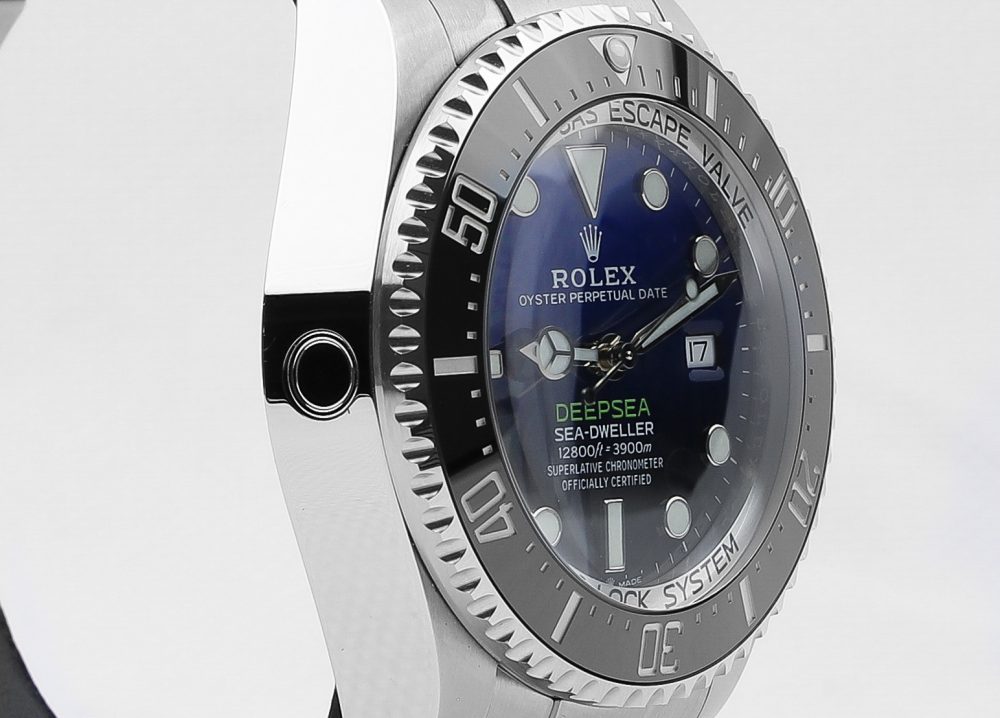
Rolex Helium Escape Valve Complete Guide
Helium escape valve is a term that we regularly hear in connection with Rolex watches. And you probably know what it is. But why does Rolex use a helium escape valve on its watches, how does it work, and what is the history behind it?
Rolex Helium Escape valve history
The helium escape valve is just what it sounds like – a valve that releases helium gas. This small but clever feature is actually a crucial part of a serious dive watch in order to be able to stand the pressure of deep dives. Today, a number of watch manufacturers use the helium escape valve technology in their watches.

The Rolex helium escape valve was first introduced for the Rolex Sea-Dweller, but did you know that Rolex was part of inventing this feature? In fact, Rolex co-created the helium escape valve together with the watch brand Doxa in the 1960S. The first Sea-Dweller to have this feature was, more specifically, the double-red Sea-dweller.
Here’s the issue that a helium escape valve solves:
A helium molecule is tiny, and when helium molecules are subject to pressure for a period of time, they can find their way past the gaskets of a watch that are meant to keep it perfectly sealed. Water molecules are too large in order to get through, but helium molecules can thus find their way into the watch case despite a perfectly sealed case.
When helium finds its way into the watch case, it builds up pressure from inside the watch. Ultimately, that pressure has to go somewhere. If something is not done, the pressure can cause the crystal to pop in the worst case.
In order to protect Rolex’s most serious dive watches that may be subject to pressure when used during deep dives, Rolex developed the helium escape valve. The helium escape valve is built to release the helium molecules that may be built up in the case in order to prevent the watch from exploding. Rolex made the escape valve to be automatic so that the helium automatically leaves the watch during decompression (when the watch returns to sea level).
But the helium escape valve creates a direct channel to the inside of the case, so can’t this create a risk that water finds its way into the case via the escape valve? Any hole or way into the case can be a risk of failure. But the answer is no. The Rolex helium escape valve is a one-way street, which means it can only let the pressurized gas out, but not let any water in.

Unlike Rolex, some brands have a manually-operated helium escape valve rather than an automatic. This is particularly Omega, which has incorporated this system by placing an additional crown at 10 o’clock on the side of the case.
With that said, the issue with the pressure is not during a dive, but rather under decompression when coming back to normal sea level.
Rolex says about the helium escape valve:
”Professional saturation divers must spend long periods of time in a decompression chamber, where the gas mixture they breathe is composed of approximately 95 per cent helium. The helium molecules are so small that they penetrate the watch case, with the result that the pressure inside the watch equalizes with that inside the chamber. During the decompression phase that slowly brings the diver back to normal atmospheric pressure, the gas cannot always escape from the case sufficiently quickly. The resulting excess internal pressure risks damaging the watch. To solve the problem, the Oyster Perpetual Sea-Dweller and the Oyster Perpetual Rolex Deepsea are equipped with a helium escape valve allowing the gas trapped inside the watch to be released without affecting the integrity and waterproofness of the Oyster case.”
Rolex helium escape valve today
Like with everything Rolex, the company has improved its helium escape valve technology numerous times over the years. Today, the only watches in production to use this feature are the Deepsea Sea-Dweller and the Sea-Dweller. This watch also happens to be one of few Rolex watches that has an engraving on the case back.

A common belief about the helium escape valve is that it is purely a marketing ”stunt”, used to make the watch appear more advanced and that it serves no actual benefit. But as proven above, the helium escape has crucial importance for deep dives. Now, most people will never go deep diving with their Rolex watch to the point and for a long enough period that the helium escape valve needs to be used. But at the same time, bear in mind that the Deepsea Sea-Dweller is meant to be Rolex’s most serious professional dive watch, and so it is in fact used by some professional divers. Furthermore, the helium escape valve is today, more a part of the identity of Rolex’s most serious dive watch, and creates a connection between modern, and an era of Rolex dive watches where this feature was actually crucial for the professionals wearing the watches.

Because the truth is that unlike when the helium escape valve was first introduced, there are now far more advanced dive tools than a mechanical wristwatch that professionals can use. The era when these watches were absolutely necessary for divers are officially over – but their legacy still remains. And let’s be honest – it does contribute to the charm and coolness of this watch.
Furthermore, since the helium pressure builds up when coming up to land, it just needs a way to get out of the case. And the truth is that this can also be achieved by unscrewing the crown. And since you are on land anyways, it is not a problem to do so. So technically, the helium escape valve is unnecessary as long as you remember to unscrew the crown after a dive.





bought my sea dweller helium escape valve domed not glass face are they available now